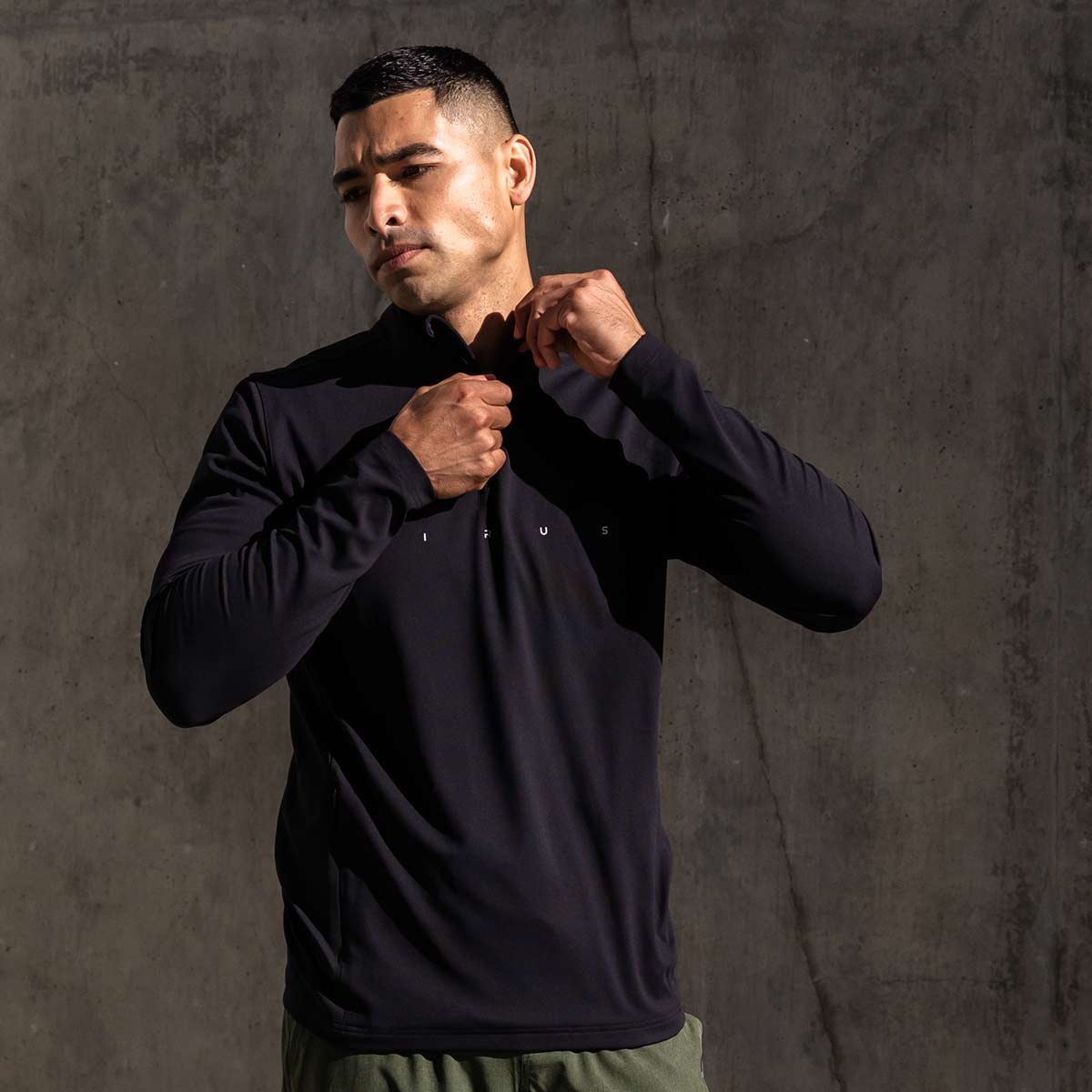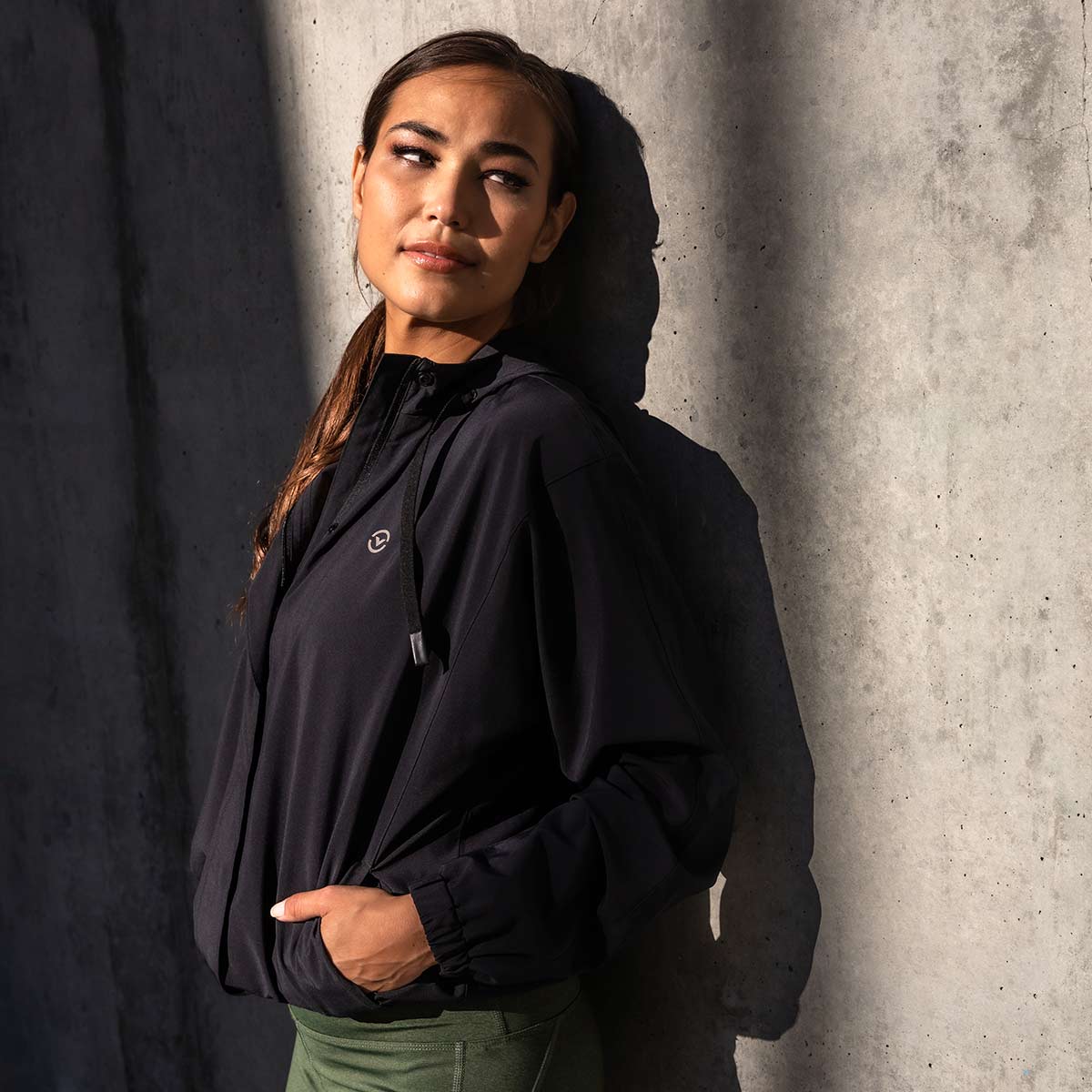Sean Noriega
Sean Noriega’s drive to succeed is immediately clear judging by his career. But beneath the surface, he has a long-term approach that powers his dedication and will to win. Through his analytical background and stoic nature, Noriega has carved his own unique place in the powerlifting scene. Noriega sat down with Virus to discuss his career goals, how an engineering mindset makes him a better coach, and remaining stoic throughout the ups and downs of injuries.
Sean Noriega’s ambitions for his powerlifting career is simple: to be known as the best ever. And while that’s easy to say, you begin to believe him when examining his holistic approach to competition and training. Noriega has a clear, structured process to reaching his goals, blending an insatiable thirst for competition with his engineering background, all while remaining stoic throughout the journey.
Noriega’s athletic career started on the diamond, but he naturally found his way into powerlifting as he was just as excited about offseason workouts as he was during the baseball season. After competing in his first USA Powerlifting meet, the decision to go all in on his new passion was simple.
“I put a ton of pressure on myself to always stay ahead of the curve. I don’t think I have ever wanted to mentally decompress post-meet, for better or for worse”
Powerlifting fulfilled Noriega’s competitive spirit. While training for competitions, Noriega says that he doesn’t ever need to get into the zone because he never actually comes out of the zone due to his daily approach. He admits that he becomes less social as competition day approaches, ramping up his productivity by moving faster through his routine.
Noriega uses music to increase his confidence and awareness in the buildup to competitions. He also watches videos from old meets to visualize what a successful lift looks like.
“What makes me proudest about my powerlifting career is that I have never lost my tenacity”
Noriega’s biggest challenge on competition day is getting out of his own head. Describing the buildup as “more cerebral than I would like,” he explains how he over exaggerates his physical movements before lifts to force himself to be more present and in the moment.
“I sing out loud on meet day, I make big gestures, and ultimately try to bring everything that’s turning in my head out into the real world,” says Noriega.
And while Noriega’s most-worn Virus items are the quarter zip and joggers for warmups, his go-to piece on competition days is the carbon fiber singlet. He emphasizes the technical details that help increase performance, including how well the singlet sticks to the bar and the bench pad. That’s not to mention the bold patterns that stand out from his opponents.
Noriega competes with a clear purpose in mind: winning. Finishing second in his 83 kg weight class for the last four years, his most immediate career goal is to win the division. His long-term goals include winning at the 93 kg weight class, then totaling 2000 lbs in the USPA.
“Remaining stoic through life’s best and worst is so important for reaching fulfillment and not allowing volatility to sway your emotions or cause your mental health to waver”
Noriega has a clear, structured process for reaching his ambitions. He has yet to experience burnout despite his dedication, so he tries to continue finding bigger goals worthy of pursuing. Understanding that the satisfaction of breaking personal records or winning competitions is fleeting, Noriega instead focuses on the journey and the process.
“The best part of all this is pouring all of your efforts into the journey itself. Seeing the efforts pay off is amazing, but I think what makes it feel the best is knowing that it will translate into an even stronger journey. Every future path’s baseline grows higher and higher,” says Noriega about the bigger picture of his journey.
“I have set some individual lift records and won some money meets. The satisfaction doesn’t last long, and I am okay with that”
Noriega says that he hasn’t accomplished anything in powerlifting worth being proud of just yet. And while that may sound negative, that feeling only makes him more resourceful and resilient in the long-term. He describes the lack of any recognizable marker as making his journey “feel infinite.” Instead, he focuses on the everlasting qualities that he’s gained from lifting over any trophies.
“I truly do not feel like there is anyone else who is willing to work harder than me, and that is a much more enduring quality than a championship,” says Noriega.
That drive has translated into areas outside of competitions. Noriega credits Instagram for helping build his coaching career. He divides his social media content between meet recaps, client success stories, and answering questions that aren’t generally addressed by most powerlifters. Regardless of the topic, Noriega focuses on the principles and guidelines that viewers can use for their own journeys.
Noriega credits his problem-solving ability honed by a math and science background for being an effective coach. Having graduated from MIT with a degree in mechanical engineering, Noriega sees his main coaching skill as recognizing trends and making decisions that result in predictable patterns. His scientific background also made him realize that there are several lenses in which to solve problems, making him less dogmatic or biased towards any one method.
“You have to stay the course and fall in love with the best parts of the process, while understanding the worst parts are par for the course”
“I know that there is no perfect or complete model, but through picking apart your guiding principles, you can approach a better model,” says Noriega.
Similarly, an important lesson he wishes to impart on his students is connecting the relationship between the inputs of powerlifting (training stress, sleep, and diet) with the outputs (performance and progress). He makes it a point to explain every detail of a workout plan to his students, giving Noriega the foundation to work through the emotions that a student will feel on a given day.
But most of all, Noriega wants to help his students manage expectations. Emphasizing the inputs and outputs keeps the focus on logic and critical thinking, and away from the emotional ups and downs of a powerlifting journey.
“You can always learn something from negative experiences, and use that information to redirect yourself onto a better path toward what you seek. There are no bad days, only new data,” says Noriega.
“I always have, and always will, have the mindset that you must provide value FIRST in order to be successful”
Noriega was ingrained with that stoic mindset early in his athletic career. He credits Tom Migliozzi, his high school baseball coach, as his most important mentor. He learned the importance of being stoic and resilient, and not taking the highs too high or the lows too low. That stoicism is an essential part of his career due to the fluctuations, stagnations, and regressions of being a powerlifter.
Noriega’s stoic nature has also been essential in navigating injuries. Not surprisingly, he has a structured approach for getting past the mental side: he gives himself 24 hours to get past the sadness and self-pity. From there, he takes responsibility for his recovery and reaches out to coaches and professionals to plan his rehab. He also keeps himself motivated by looking at the big picture of his journey.
“Wherever an injury knocks you down to, however much weight you lose on a certain lift, remember, there was a time that was your absolute best, you were thrilled to be there, and were invigorated to keep going. So why would you lose that, knowing where that passion would take you?” says Noriega about the importance of keeping perspective.
“My rule is to give yourself 24 hours to feel whatever you have to feel: rage, sadness, self pity, etc. But after that time expires, start formulating a plan”
And while Noriega emphasizes the “infinite” journey of powerlifting, he does take competition seriously. He views his peers in his weight division as a marker by which to measure his own improvement. Known for his rivalry with Russel Orhii, he also credits John Haack for raising the level in the 83 kg division. Of his rivalry with Orhii, he recognizes how competition has pushed both lifters further than they would have been able to reach on their own.
The perspective shows the holistic view in which Noriega approaches competition: he is simultaneously driven to beat his peers while also understanding that he needs his peers to push him in order to set a higher standard within himself.
“I will always lift for my personal development, and I find fulfillment in this journey, but you will never know if you are working your absolute hardest unless you have a benchmark to meet, or a basis of comparison”
“Competition is a healthy reminder that living in a world without a frame of reference will always leave you with perceived limits lower than your actual ones,” says Noriega.
You can see how the puzzle pieces that make up Noriega’s competitive and coaching career all fit together. His competitive drive molded him into a lifter always searching for the next goal. His stoic nature keeps him focused on a long-term path despite the ups and downs of emotions and injury. There’s a balance between the “infinite” journey and the immediacy of competitions and rivalries. But whether his motivation comes from an external source or internally, Noriega has a plan for it all.










Leave a comment
This site is protected by hCaptcha and the hCaptcha Privacy Policy and Terms of Service apply.